So, there I was, diligently working on a Z series version of my AF book when I came to the Back Button AF (BBAF) chapter. Within moments I found myself running head-long into an instructional blockade.
As I was confidently outlining the benefits of BBAF, it occurred to me that one of its primary benefits has virtually disappeared with mirrorless cameras. In fact, within a week of updating that chapter, I had received several e-mails about the topic as well. Apparently I’m not the only one thinking about it!
So, what changed? Simple – AF points are now all over the viewfinder. The need to focus and recompose is mostly gone (depending on how you shoot).
Think about it. The primary reason for BBAF is so you can focus and recompose in AF-C mode. In fact, the only operational reason to use BBAF is so that you can avoid switching to AF-S mode and leave the camera in AF-C mode all the time. (Of course, some people just like the ergonomics of it better – see my BBAF video and free guide for more background info).
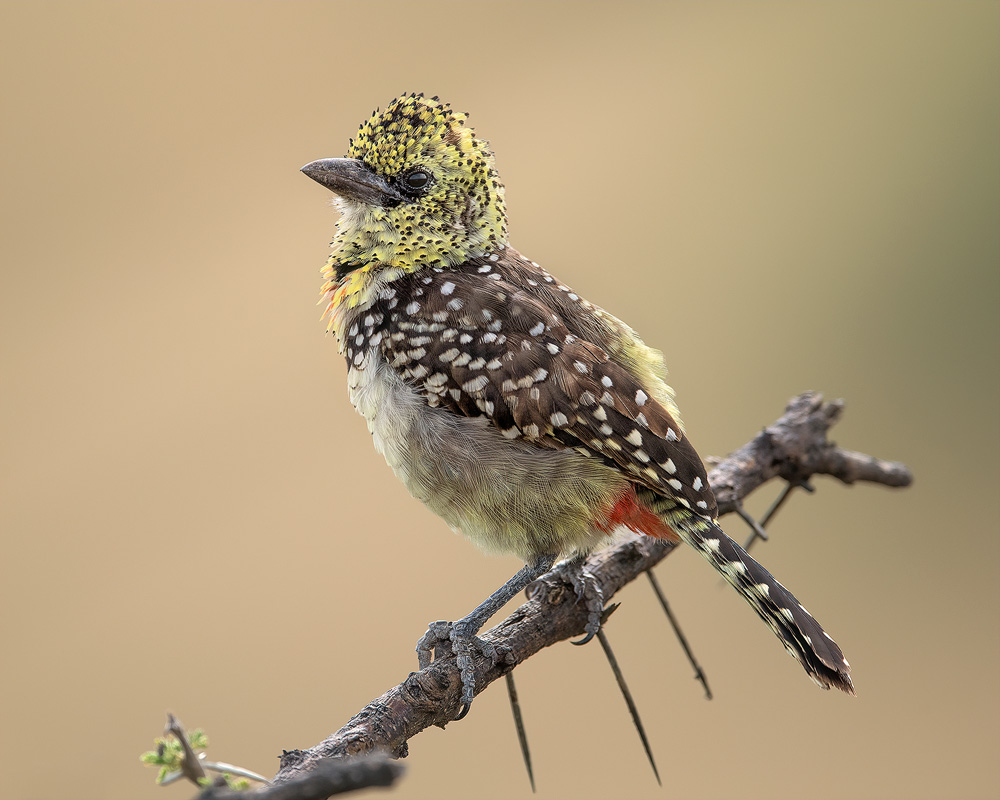
Of course, focusing and recomposing is critical with a DSLR since the AF points are clustered towards the center area – and this is especially true for full-frame shooters. Sometimes, there’s just not an AF point where you need it.
So, with DSLRs, we need a speedy way to focus and recompose – without switching to AF-S constantly. Enter BBAF. We can focus on our subject, release the AF-On button, and the focus distance will stay the same as we recompose and shoot. Pretty snazzy.
However, in a world where AF points laugh at limitations and span the entire viewfinder, it’s a different game. After all, we can just as easily move our AF point to where we want it in the image, focus, and shoot. Even if you find yourself in a situation where you would have normally switched to AF-S, you can stick with AF-C since the AF point is on the spot you want it.
And, as a bonus, that’s how I prefer to focus!
For example, when chasing down wildlife images, I always try to move a focus point to the eye of the subject and keep AF engaged while I shoot. That way, any slight movements on my part – or the animal’s part – are instantly compensated for by the camera (again, as long as it’s in AF-C).
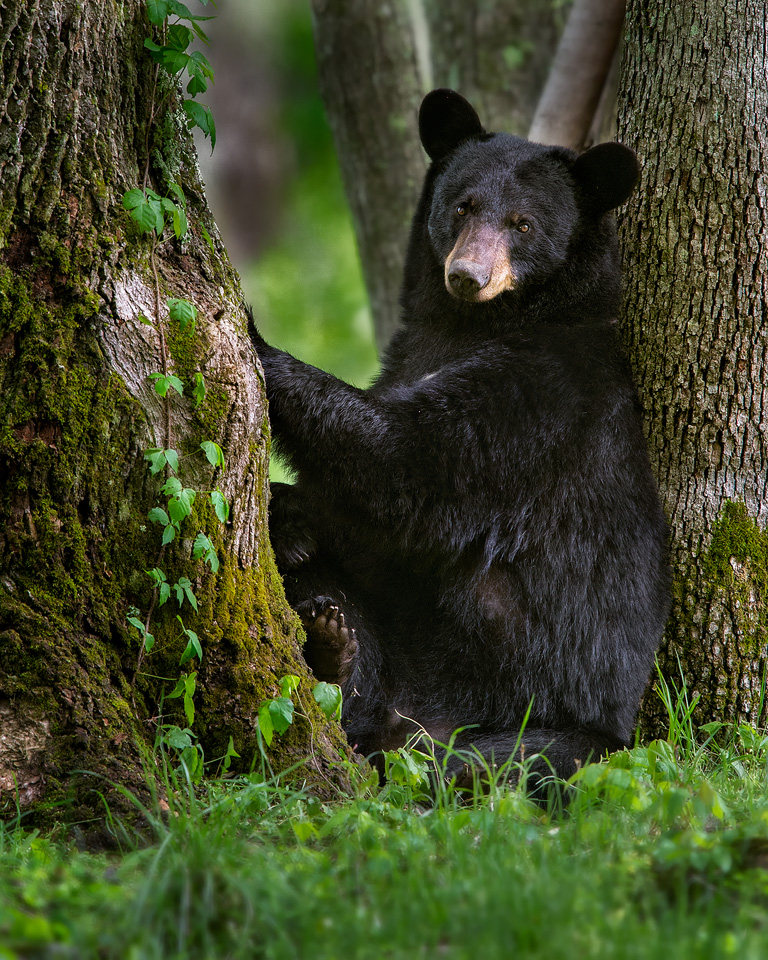
With my DSLRs, this was an issue since the eye frequently falls outside the AF field – and no amount of frustrated joystick pushing (or cursing, as it turns out) can get an AF point to the subject’s eye when it’s outside that AF field. So, I’d use the focus and recompose technique.
With mirrorless, I don’t have to do that anymore. I always have an AF point that I can easily place on my subject’s eyeball.
Plus, with shutter release AF, your thumb is free to wander around the back of the camera and play with other controls as you shoot – like the little AF joystick for instance. This, of course, makes sliding those AF points around the viewfinder much easier – and I can do it while keeping AF active.
In fact, one immediate Shutter-Release AF advantage I enjoyed was when dealing with an animal that can’t keep its face still. For example, take a preening bird. One second its face is low working over some wing feathers, the next moment its head up up high checking for predators. When you’re chasing the eye with a single AF point, having your thumb free to jog that AF point around is a life saver (and a game-changer).
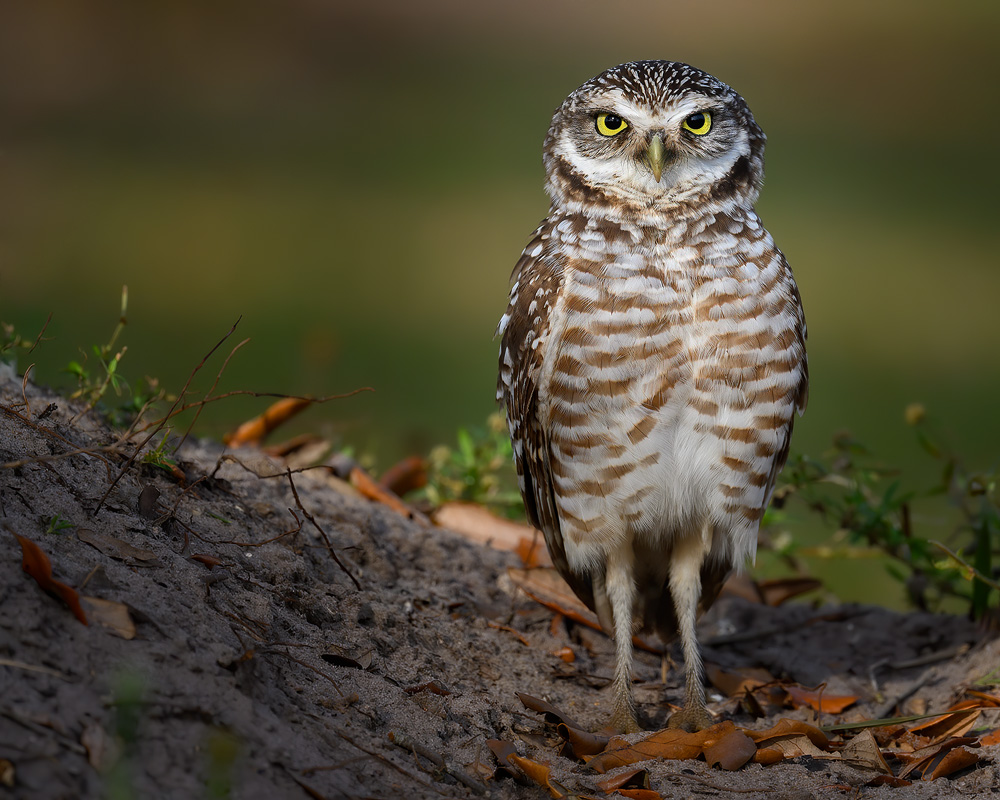
I know what you’re thinking – if Steve is shooting shutter-release AF, is the devil picking sides for a snowball fight at this very moment?
Well, probably not just yet. 😀
The thing is, while I can see the benefits of shutter release AF, there are still times where BBAF is beneficial.
For example, BBAF is still handy when you want to “lock” focus at a certain distance. Maybe you’re shooting a landscape and you don’t want the camera trying to re-focus every time you take your finger from the shutter release – even if it is focusing in the right place (especially if that place is sometimes obscured – like by waves, blowing leaves etc).
Perhaps you have a tricky AF situation and the camera sometimes gets a lock and sometimes struggles. In those instances, it may be better to achieve focus and then release the AF-On button. You don’t want to see the decisive moment in the viewfinder only to discover your camera picked that instant to start struggling with focus!
Oh, and if you’ve ever shot wildlife on a windy day, you know that there are times when grass, reeds, branches, or even Spanish moss will drift between you and your subject. You can often get the shot during clear “windows” when this happens, but it’s helpful to have locked focus on the subject and not risk the camera trying to refocus on the foreground at the wrong moment.
Finally, I often give a gentle tap on the shutter release, pressing it to that half-way mark to keep the EVF active during a pause in the action. I really don’t want the camera trying to focus every time I do that (although, I could train myself to push another button I suppose).
Of course, assigning a button for AF-Lock duty can overcome all the problems mentioned above and allow you to use shutter-release AF. However, I’ve personally never liked that option. For the way I’m wired, it’s more intuitive to press a button to make something happen than to press and hold to keep something from happening.
Still, in the end I may eventually, and somewhat ironically, assign my AF-On button to AF-Lock duty one of these days. Especially if I decide that, for my style of shooting mirrorless, there are more advantages than disadvantages to shutter release AF.
At any rate, what’s right for you?
Honestly, at this point I’ve been switching back and forth and haven’t even decided what’s right for me! The thing is, I have never believed in blindly adhering to a technique or methodology when new circumstances or information present themselves. If things change it’s worth reevaluating our techniques.
That’s where I feel like we are with this.
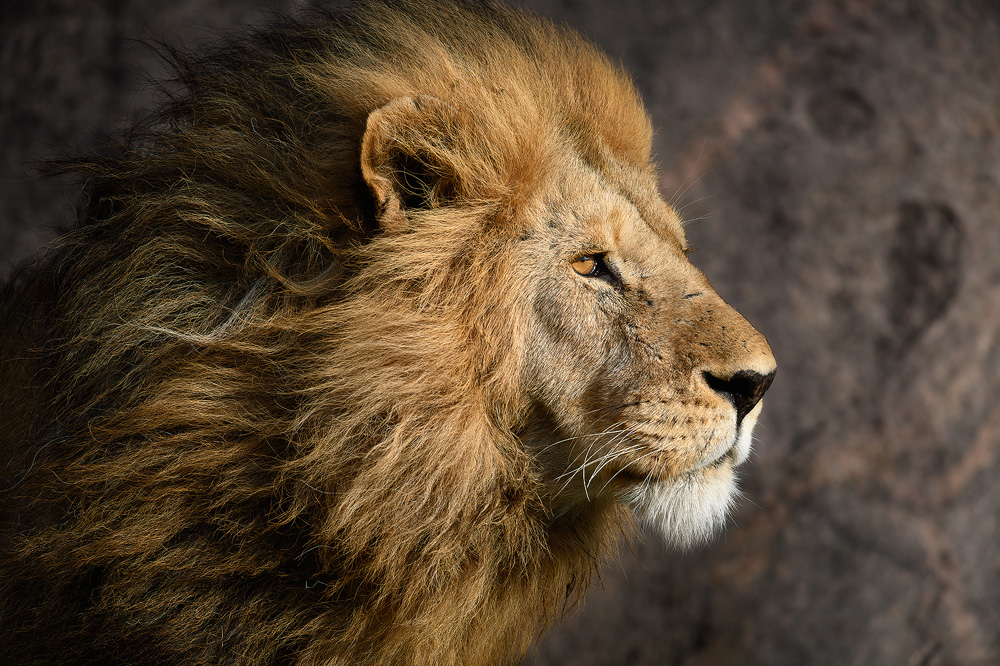
I think for some mirrorless shooters, BBAF still makes sense, however, for others, I think the time has come to reconsider shutter-release AF.
The way I look at it is if you’re shooting mirrorless, you need to weigh your options. Basically, I think it comes down to what you want your thumb working on – focus or AF position.
With BBAF, your thumb is sort of married to AF. Sure, you can move your thumb to adjust AF point position, but then you’re no longer focusing. (Note – yes, I know you can assign the joystick on the Z series to focus and move the AF points – but – you can only do one or the other – move or focus, you can’t do them together. With shutter release AF, the camera will keep focusing as you move the AF point.)
With shutter release AF, you get to move your AF points and focus at the same time – but – you lose the ability to just take your finger off the AF-On button to “lock in” the focus distance.
In the end, I think it really comes down to how (and what) you shoot and what gear you use to do it. Since I still use a combination of DSLRs and mirrorless, for now I’ll probably (mostly) stick with BBAF just for muscle memory purposes. However, when the day comes that I go entirely mirrorless, all bets are off 😀
Thoughts? Comments? Let me know below 😀
PS – If you enjoyed this post, I think you’ll REALLY like my e-books and video workshops! Thousands of pages and hours of videos filled with tips, tricks, and techniques – all my best content! Check ’em out – click here (hey, it’s free to look).

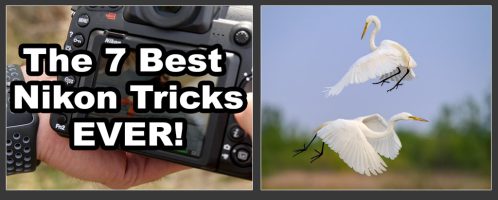
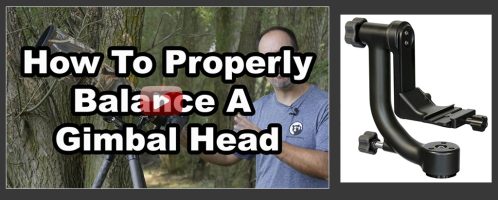
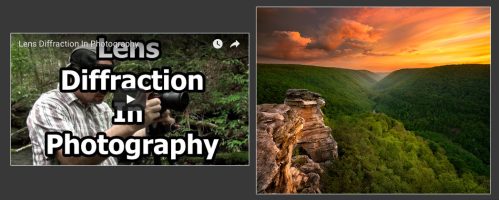
I love your posts and videos and tips but this one doesn’t make sense to me as there are so many other reasons to use BBF. Yes my mirrorless has 121 focus points so recomposing is not necessary BUT I still use BBF for light painting and star trails and focus stacking and pro capture — times where I need the focus to stay put. When I focus at night or when light painting I don’t have to switch to MF every time and switch back again for each image because I am using BBF. The starry night feature AF… Read more »
HI Lisa –
I agree that it’s not for everyone and I outline a variety of reasons why you may still want to use it in the article – right under the owl photo. The first is just what you talk about for keeping a set focus distance.
I’ve got something that might bring you back to loving BBAF on Z6/7 – assign AF-ON to joystick press. That way, you can have your cake and eat it too – you can move the AF point where you want it, press the joystick in and – bam. The only worry is – if you haven’t been using it that way on DSLR bodies, you might not be used to pressing it in without accidentally moving it to one of the sides occasionally. That just takes a little bit of practice and getting adjusted to, though. As an aside –… Read more »
As someone who switches between a D850 and a Z6, I like to have all my controls situated similarly, so I don’t waste time futzing. While I see the logic, I fear it will screw up my muscle memory.
I tried using a Sony A9 with front focus photographing Northern Spotted Owls in the forest with low light. The Sony had a terrible time focusing on the owls’ eyes, and focus kept jumping around–to their perch, the leaves in the background, etc. I quickly went back to back-button focus and that fixed that problem. Interestingly, my Canon consistently focuses better than the Sony in low light.
Is the D5 your last DSLR?
Great article. I have a D6, D500, D850, and a Z7 and I never thought of switching to shutter button focus when I got the Z. For me I never need to focus AND move the points. It’s sequential- move the point and THEN focus. I dont care if the intermediate points are in focus anyway. Only the final focal point matters since that is the only place I want to take a photo.
Btw – I watch all ur videos, read ur web site and bought ur Ebooks to support your work.
Hi Dave –
Nope, I still have plans for a D6 😀 I can shoot both happily.
Also – thanks for the purchases 😀
For now I will continue to BBAF as I just purchased the Z6. Too much to think about changing habits at the onset. Perhaps later I’ll try different techniques. Thanks so much for these videos. They are soooo helpful.
I think it might be faster to BBF and recompose, than to first compose and then have to move the AF point around to the point where you want it (using the joystick).
yes you are right. for candid moment and wedding photographer we dont have time to shift the focus point. For wildlife and birding may be recompose is risky where you may be using tele lens.
I follow your posts religiously. I have a question about mirrorless that is more or less on this topic. I know you are an avid Nikon shooter, and I also know that your feelings are that the Z series Nikon cameras are not up to the needs of action wildlife shooting, at least not yet. I shoot with the D5 and the D850, so BBF will stay in my arsenal. My question is — there’s another mirrorless that DOES have the needed characteristics for wildlife action and that is the Sony A9, A9ii. Is this the way to go now… Read more »
I’d say both the a9/ii and A7R4 are good Sony bodies for wildlife. Both easily compete with the best Nikon has to offer (in DSLRs too). I agree that the 400 2.8 will often come up short – but you can add a TC or two into the mix. It’s not my preferred way to go, but it’s an option. The 600mm is large but it’s lighter than the Nikon 600mm – and Nikon 500mm too! It also has more features and seems to take TCs a bit better than my 600mm E. I can tell you that I do… Read more »
I shoot with the A9 & 400mm w1.4x zero IQ loss
Jerry, what prompted you to choose the 400 w/ tc instead of 600mm?
More universal. Plus the 2.8 is nice for low light situations. If it was any other camera system I’d go with a 600mm. The Sony’s 400mm with 1.4x is that good with IQ
As you can see from my comments to Steve, I am strongly considering moving from Nikon to Sony. I realize that the Nikon has a 400mm f/2.8, however, it’s almost exactly 2 pounds heavier. Given the benefits of of mirrorless in weight as well as other general photography benefits, it’s something I am strongly considering. However, I shoot in dusty environments, and even the Sony a9ii with its better environmental sealing, is highly prone to dust. Have you seen this issue? Would love to continue this discussion in email: [email protected]
I started to use BBAF from that day I missed a good closeup shot of a Goshawk that landed (with interest) on a tree where I was photographing a Great Spotted Woodpecker nest! Just a half click on the shutter button, the D7000 tried to get focus and got it on a very nice branch full of leaves way in front of the Goshawk, it was so out of focus that i didn’t even notice that branch looking through the viewfinder! A second later the Goshawk was gone… And it was quite sharp in my viewfinder before pressing that damn… Read more »
Steve, good article thanks for your thoughts. I think there are more reasons for BBF. I do it about 80%, turn it off when I am sharing my camera!!
Does your AF ebook cover the Z6?
I’m working a separate book for the Z series – should be out late May / early June.
Thanks! Should I get this one now and can get a discount on the Z specific, or probably better to wait?
There won’t be any discounts on the new book – it’s a major re-working and re-write – so it’s probably better to wait. The old book will never cover the Z series, so if you don’t need it, I wouldn’t get it.
if my focus point is in the middle and i point it to the point i want in focus then i can move the camera and recompose/ so why use bbaf for not moving subjects ?
I can see your point for wild life. Freeing up the thumb could help a lot, but for wide area AFC when you are using face or eye detect BBAF works great. That along with the Fn1 button assigned to activate the target works together amazingly well.
You are making me think hard on this. I think I will stick with BBAF for now, but I will be messing with the change a bit.
Wow. I’m a huge fan of BBF thanks to you….and now you’re about to blow my mind! Oh noooooo
Mind you, I just sold my DSLR for the glorious Z6 hmmmm
It’s good to have options, right? 😀 I think I’m sticking with BBAF for now as well, but using it both ways with the Z cameras and Sony cameras has been interesting.
Steve: I shoot the A-9 and A7r-3 and don’t see the advantage of giving up BBF. With these Sony cameras the and the Focus mode set on Eye Detection the focus remains in place. Also with a non-mammal subject (Bird) the AF-Lock option permits another nice option to lock in the focus point and then move the subject into a crosslink PowerP{point within the grid.
Thanks for your continuing thoughts on BBAF, Steve. I’m not sure that mirrorless or not is the issue with BBAF. I shot 35mm film or APSC Nikon for 25 years, mostly events and photos for organizational websites. I almost always used BBAF on Nikon. I finally gave up on Nikon about a year before the very belated D500 showed up. Actually, the lack of the D500 wasn’t the problem. The lack of proper APSC lenses was the problem, and still is. However BBAF didn’t work well w my original Olympus E-M1, nor was AF C very good. With the E-M1… Read more »
Depends on the camera I think. My Sony and Nikons are just as accurate in AF-C as they are in AF-S. I wonder if Olympus uses CDAF trimming with AF-S to tighten up with focus at the last microsecond.
I have a Nikon D500, D810 and the Z7. I always use BBF. I love to shoot dogs playing, running and swimming. I have been trying to bond to my Z7 but just don’t love it. I sit in the middle of a grassy field while my husband throws the ball and try to capture our dog as she runs towards me and past me. I never have any luck. If anything is in focus it is her side but never her head or face. I seem to have much better luck with the D500. Do you have any suggestions… Read more »
Don’t give up on the Z7. The latest firmware upgrade to 3.0 is a big auto-focus improvement and there are many more versions coming. I also have a D500 (bought AFTER my Z7) and everything everyone said about the D500 for wildlife and birds in flight is true, but I’ve gotten good photos with the Z7 though, yes, it takes work and some practice (and a bit of luck for now). The D500 and Z7 make up a great combination.
Hi Steve, I’m still shooting DSLRs (850 + 750) and one option I’ve found is to keep the right thumb on the focus joystick while using the programmable button on certain telephoto lens to initiate focus.
Thanks for your articles!
I have the Z7 and 300mm PF combo, and just use the auto-tracking mode. I place the middle of the admittedly large square over the eye and start auto-tracking it. Works pretty well for me most of the time. I don’t like having to use the joystick unless I am doing landscape or macro, which is of course completely different.
I do that sometimes as well, but the results are often too inconsistent on closer subjects (at least for my needs) with that large square or the tracking box loses the eye at a critical moment. I use it if I happen to be using tracking mode and need a quick still, but otherwise I get better results with a single AF point. Sony does a better job here because they have multiple size tracing areas and do a better job at staying on the eye. However, even with Sony I tend to favor single point for wildlife portrait type… Read more »
AF Points – I don’t undertand difference between mirrorless and DSLR regarding focus pts – are mirrorless pts anywhere in viewfinder? why can’t DSLRs do the same thing?
Yes, AF points cover the viewfinder in a typical mirrorless camera (well, almost to the edges anyway). DSLRs have physical limitations in to full viewfinder AF coverage due to a combination of the mirror box, size of the AF module, and flange distance.
Steve, I sold my Nikon gear and went to Olympus, I just couldn’t handle the weight of my D850/vert grip and my 600mm. Most of your website still applies, I just have to convert it to a different naming convention. On my Olympus M1X and my EM1 M3 I use both. You have an easy to understand style, and man, to keep your thoughts straight like you do you must have a very hi IQ. I still read every post, and who knows, maybe I’ll switch back to Nikon when later versions of the Z-series appears.
Maybe you should have checked out the spec of the camera before buying it? My Olympus OM D does BBC pkus other options?
Yup, they do! But Stephen, you know how “poor” the image is out of M4/3… 🙂 I can still use AF Single Focus, and BBAF with the flick of a switch or button. I sold everything I have Nikon, which was considerable! Now I’m using the M1X and the EM1 M3. I still loved my Nikon gear, but the 300mm f/4 was too good to pass.
Moving the AF point also gets rid of any potential parallax issues introduced by focus & recompose, and really good tracking may ultimately make it all moot…
I never shot a DSLR so for me it’s always been natural to just put the AF point where I need it, even the bodies that don’t have a joystick usually let you use the touchscreen (with the display functionality off) for that purpose even while peering thru the EVF (far more intuitive than it sounds, not unlike a laptop touchpad).
Hi Steve… On my D750 and D850, I use the the Fn1 button on the front of the camera for BBAF with my right ring finger, freeing up my thumb for back of camera things. After I got the D850, I experimented with assigning Fn1 to some other functions, but despite many hours of re-training, my ring finger steadfastly refused to cooperate on a consistent basis, so Fn1 remains BBAF! Perhaps some of your viewers might be interested in this approach.
You’ve invented FBAF!
I used to assign autofocus to a front button with the Fujifilm X-T3. But I found that the F1 button on the Z7 just isn’t optimally placed for FBAF.
I was able to set up BB focus on my Nikon Z50. Can’t live without BB focus
Thanks Steve, for this topical article. For outdoor genres, the Z system is world class for macro and landscapes, but it falls too short in other key areas ie AFC and the still-unfixed customization options. Since October 2018, I’ve used the Z7 side by side with the D850. I persist with BBAF on the Z in all cases. Muscle memory and consistency is one reason. Second, it is too often swifter to keep the AF cursor on the eye of flighty subjects by slight reframing instead of “lateral-pushing’ its relocation. The exception are large mammals and similar subjects that fill… Read more »
No argument for tracking action – the D850 is noticeably better than the Z series. However, the article is sort of a “mirrorless in general” thing and not specific to Nikon. My Sony a9ii outperforms my D850 when it comes to tracking and staying locked on. So, it can be done but as you say, the Zs are kind of towards the bottom of the pile in that regard. Also, I agree that with many subjects it’s better to just get the AF area to where you want it and keep it there (regardless of the camera). Where I’ve found… Read more »
Thanks Steve The one lesson in these comparisons between cameras and systems is we have so many choices. And many of us tend to covet that better feature(s) of Camera X / that great lens in Brand Y etc… As I always check myself the main benefactors are the retailers and gannets waiting to swoop on Used “bargains” 🙂 😉 There have to be very strong reasons to change brands. Equally, there is huge hyperbole shoving photographers toward MILC. I don’t regret getting a Z7 even though I curse the camera regularly (missing Custom options mostly). Nonetheless, the upgrade /… Read more »
Honestly, I don’t think Nikon has a choice here. They really do need to more or less catch up to (or, exceed) Sony on the next generation of Z cameras. If not, they risk looking like they will never catch up. So, it’ll be interesting to see if Nikon can lighten our wallets in the future or if the exodus to Sony will increase.
Changing to a different AF sensor will likely reset the cameras subject tracking information. Perhaps not a big deal for a stationery subject but more so if the distance between camera and subject is changing. Please correct me if I’m wrong – I’m not up to date with the latest AF systems.
That’s honestly a good question. When I’ve moved the AF point during action (both mirrorless and DSLR) it doesn’t seem to lose tracking if I am on the subject with AF engaged. Worth testing further though.
Some cameras let you use a back button to *pause* the continuous AF. The front button keeps the AF going except while the back button is also pressed. I have found this works better for me.
I use the bbf to lock on to a subject and track it until I am ready to take the photo.
Works the same with shutter release AF.
I have now used BBAF in a year on a D500 – but I see your point about the focus points filling all the viewfinder. But that goes for my camera as well doesn’t it ?
It does to a point – the D500 has pretty good AF viewfinder coverage.
Hi Steve, I enjoy your videos and admire your images. Trouble is your a Nikon shooter and I’m a Canon man. always have been since my film days, just carried on I suppose. My problem is trying to follow your suggestions and advice on a Canon. Do you know of any Canon shooters that do what you do please ? I use a EOS R but for wildlife I and sports I go back to using my 7D mark 2 as I find for the same reasons as your Nikon guys. Although I love the R its not really a… Read more »
Steve… how do you know if you are using BBAF correctly? Have a D500. Ive read alot of your stuff and even watched your vids.
Been using AF-ON as focus lock for years on D-500 with shutter-release focus. Love the freedom of thumb movement, as you suggested, for focus point movement. The occasional times I need to lock focus is readily available with the AF-ON. Great article as always!
I must be missing something….
With my Nikons – Z6 and DSLRs – for landscape photography, I often use BBF to focus on a subject in the shade, and then
move my focus point to the bright sky to meter so that I don’t blow the highlights. How would I do that with the shutter-based focus ?
As I mentioned, it’s not right for everyone – the article is just giving ideas and options 🙂
You could still do it if, before you took the shot, you had another button set for AF lock. So, you’d focus, then take your finger off the shutter release, move the AF point to the sky, and then when you were ready to shoot, press the button for AF lock, and then shoot. Personally, for what you’re doing, I’d use BBAF 😀
Thanks , Steve. Makes sense. And thanks for all your posts/ebooks on Nikon systems. They have been super helpful. Now that I am mostly using the Z6, I’m eagerly awaiting your posts on the mirrorless Nikon system.
When doing landscape photography, you could also:
a) switch to MF after you focused, to make sure the lens stays set to where you set it.
or, alternatively:
b) meter FIRST, set for the exposure, and don’t correct that after.
of course besides the already proposed
c) use a button configured to lock AF
Hi Steve, I have been shooting the Z6 for sports for almost 9 months now. I set it up this way at the very beginning: I press the AF-ON button and hold it down the entire time that I am shooting an action shot. I also have the shutter set for release priority so that now I can get the entire sequence from just prior to the action and all the way through until that sequence ends. I love my Z6 for sports.
Thanks so much for this explanation since I’m in the same boat. I switched from 850 to Z7 I’m still trying to get as proficient as I used to be with the D850. Is there any chance of you making a video about this subject since I find myself learning easier and faster with your videos. Thanks so much for continuing to share your vast knowledge in photography with us.
Thank you again steve for your brillant explanations about the BBAF. Its very rare to find in one person artists qualitys and a real honnest and scientific way to anlyze problems. I think youare this person ! ( with a great sens of humor). But i think some day we all will switch to mirrorless, but this day hasn’t allready come for me, because i think its still marvellous to see birds flying away in reallity (with the ovf) instead of seeing them on a television , even the televison has a great quality( with the evf).thanks again
Thanks for the kind words. If you ever run across my wife, can you tell her that thing about my sense of humor? 😀
For most BIF shots, I don’t think there’s anything wrong with a DSLR. Mirrorless is getting there, but for BIF only the top end Sonys are really able to do ti (although, they really do it well). For Nikon, when people ask about which camera for action / BIF, I still recommend the D500 / D850 / D5.
I’ve recently taken to trying to shoot birds in flight with my D500 and Z50 with Nikon’s 500mm, 5.6 lens. In fact, I was doing just this this morning chasing Osprey in the sky over a small lake. If I’m understanding this correctly, I should/could be moving the camera’s focus point around with the joystick to put it on the bird (using either BBAF or a partial push on the shutter release) and then press the shutter release down fully. My problem (perhaps due to my 78-year-old reflexes) is that moving a focus point around while tracking a bird racing… Read more »
You have multiple problems going on, and none of them are your age 🙂 First, the Z50 has a touch of lag (as do the Z6/7), and that is likely part of the problem. Sometimes the bird is a little ahed of where it appears in the viewfinder. You might try turning off “Apply Settings To Live View” in your Custom Settings menu. You will no longer see the live exposure in the viewfinder, but it does seem to help with tracking and locking on. Next, for a situation like you describe, you’re better off picking a place in the… Read more »
Interesting topic thank you. At the moment, I’m completely torn. I used both a Nikon FX system with D810 & Z6 and an Olympus System with an E-M1ii and iii. I’ve used BBF on my Nikons and EM1ii for years and set my Z6 to the same mode when I bought it early last year. I attend a bird photography workshop with Scott Bourne this past December and was amazed to find that he doesn’t use BBF at all and, it clearly works for him having multiple thousands of stunning, selling results. Since I was so used to it, I… Read more »
LOL, I hear ya. I’m torn as well (as you can tell from the article). I think I may end up in a situation where I just have to learn to do both.
Excellent info. Here is the reason why I kept the BBAF way of life even with my mirrorless camera. I thought I would share this with you although my mirrorless is the DX Z50 There is no joystick on the Z50, only the multi-selector wheel at the back. That wheel does move the focus point but I find it a very slow process. Is it me ? Is a joystick on the Z6/7 faster ? I follow the BBAF with AF-On method on my D7500 i.e. BBAF and recompose. I found that using the same procedure on my Z50 is… Read more »
Try setting Custom Setting A3 to 1/2. It’s skip every other point and things go a LOT faster. Plus, there are still plenty of AF points available for composition.
Roger that. Just tried it and effectively, it moves twice as far for each press of the multi-selector.
I’ll be trying this out in the field on my next outing.
Great tip. Thanks and keep up the good work
With BiF focus and recompose doesn’t come up and I’m working hard at keeping the bird in the frame centre anyway. The only reason for BBAF is if the feel of half v full press isn’t obvious (as with my Sony on a cold day).
Honestly, that’s a good point – gloves are another, additional plus fo BBAF.
With mirrorless, then would I lose the ability to assign the PV front button as well as the AF-ON button on the rear giving me the option of either group or spot focus? I use the front button for focus as much or more than the back button.
With the way the Z cameras work at the moment, yes you would lose that ability. Hopefully Nikon changes this eventually.
I have been using back-button since it was first introduced with the F5 and I love the mirrorless AF point coverage to be sure. But I stopped “focus and recompose” because it compromised sharpness. Maintaining the “plane” of focus exactly after locking just did not work for me. If I’m critical, I just can’t maintain that exact plane when recomposing. I’m not a wildlife shooter but the main reason for BBAF for me is the ability to react quickly and intuitively, holding the button down to track or just focus and let go for non-moving subjects. Setting 1/2 points lets… Read more »
Well, now I feel sort of justified 🙂 I have NEVER used BBAF, for exactly that reason you state–I want my thumb free to move the joystick. I have set my AF/ON button to LOCK AF, so I keep my cameras in AF-C at all times and use AF/ON to lock. It was actually a wildlife photographer I know from Zambia, Ed Selfe, who taught me this and it was a revelation. Another reason, I have small hands and I have always felt keeping my thumb on that button was awkward and got painful over long periods, especially hand-holding long… Read more »
Steve, When Matt Granger tried to use 500pf on a Z7, he reported that autofocus was terrible, yet I see you are using this combination. Since I’m thinking about getting a Z7 and I already own a 500pf, I wonder if you are experiencing this difficulty.
That’s odd. I mean, I don’t think it’s always as good as it is on my D850 or D5, but no real complaints. I’ve captured lots of sharp images with the setup. It’s my favorite walk-around wildlife kit (well, as long as I don’t think I’m going to run into action LOL)
I’ve seen many people slamming the Z6 & 7 claiming they have poor autofocus and I bought a Z6 because I did not want 47mp and because the AF was apparently better than that of the Z7. I do a fair amount of action photography too, skateboarding, swimming, motocross, aircraft, etc. and I was very surprised at the good results I had with my Z6. I would say that my D810 is marginally better than my Z6 and my Olympus E-M1 Mk2 & Mk3 are as good and better at higher frame rates than the D810. I’ve had no major… Read more »
Good information as always!
Thanks Steve.
With the a9 II I use both the AF-on and the AEL buttons for BBAF! AF-on can be set to whatever mode I need but the AEL button is set to a specific tracking mode that I like for BIF. That way I can just slide my thumb over and be ready for the action and still be focusing.
Then there is just the muscle memory issue; Not sure I can reprogram back to shutter release AF.
I was using my Sony that way as well when I was in FL last month. Very handy and a good argument for BBAF. I don’t think there are any “wrong” answers here, just lots of good options 🙂
So true – it’s great to have the options! When I shoot underwater I’m usually one-handed, so it’s far easier to use shutter AF. When I’m shooting wildlife (with my A7rIII), I typically use AF-ON with lock-on expand flexible spot, which works great until it doesn’t ;), and then similarly have AEL set to AF with a single flexible spot so I can place the point exactly where I want it. I love having the AF coverage on mirrorless, always something I curse at when occasionally shooting with an SLR now!
I agree – I find myself frustrated at times with my DSLRs when I can’t get the AF point to where I want it. In the past, this never bothered me, but now I find it almost infuriating. Funny how tech can change our opinions!
Same for me. When I go back to my D810 after using my mirrorless Z6 & Olympus E-M1 2 & 3 cameras, I feel like I’m back in the stone age with the optical viewfinder and its many limitations.
You hint at the end of the post that you expect to eventually go all mirrorless. Is that because you expect DSLR improvements (new models and/or firmware updates) to stop or because you believe mirrorless is, or soon will be, better than DSLR in capabilities and performance?
Hi Tom!
Based on what I’ve seen with my Sony a9ii, I’m confident that mirrorless performance will exceed DSLRs – eventually. The A9ii is, in many ways, superior to my D5 (especially with AF all over the screen, 20FPS, no blackout to nee a few). I think in the next 3-5 years, we’ll see high performance mirrorless from every major manufacturer that can rival the best of what we see with DSLRs.
And you can assign a whole cluster of settings to a button, not just AF area and AF On. But you’ve only got the thumb to work it cp front body buttons on the Nikons. Swings and roundabouts.
I’m 80 years old and just getting around to shooting RAW (I;m still set up for one card RAW and the other JPEG). Now this comes along!!!
LOL, it’s always changing. The thing is, there are NO wrong answers here. BBAF still works just fine and isn’t in any way more limited with mirrorless – it’s just that shutter release AF has a new advantage it didn’t have before with all the AF points on a screen. Plus, I like to make things difficult 😀 😀
I set up the joystick with AFon so when I am using tracking it is easy to lock things in with BBAF much quicker to lock focus
There is another reason that I started BBAF that nobody has seemed to mention. I started BBAFing because, for me, there is no tactile feel to “press halfway down” on the shutter release no matter which camera I tried. This is why I embraced BBAF for all my shots.
Yup – for some the ergonomics of BBAF just match they way they shoot better. I agree that it takes some getting used to when trying to go back to shutter release AF. That button is really sensitive!